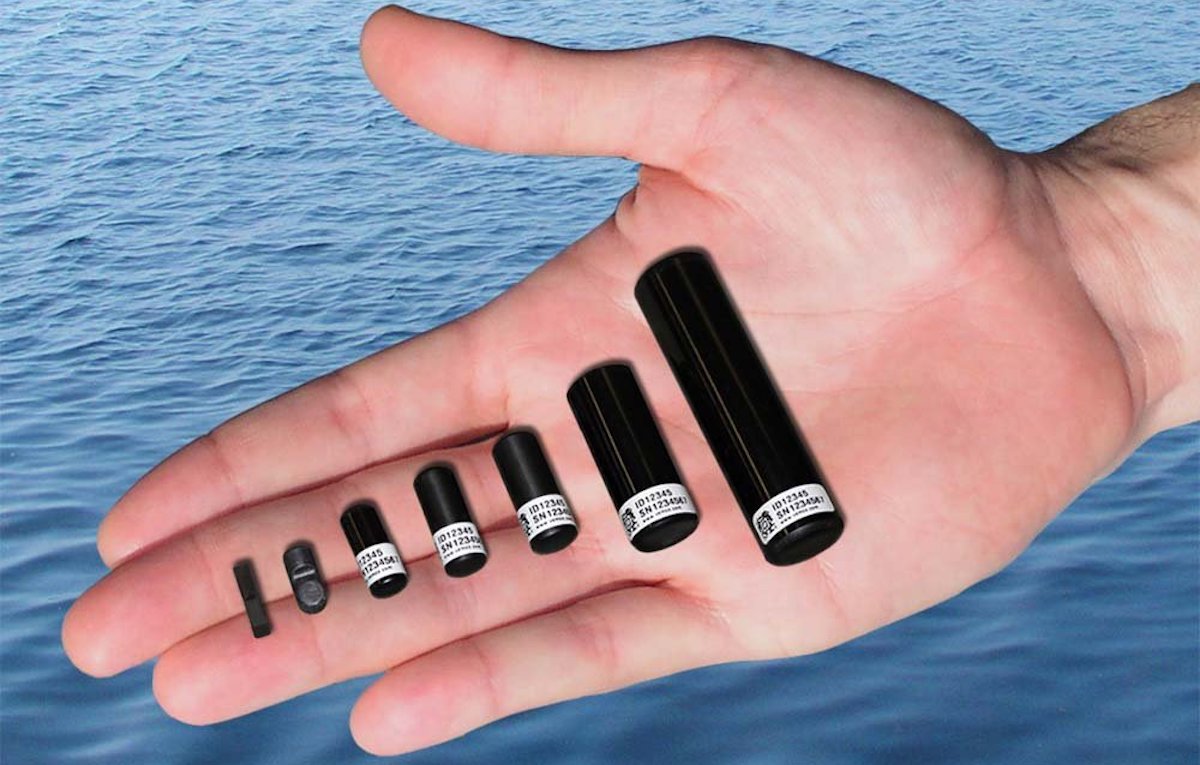The fishing industry often seems to scoff at technology—just look at the current debate surrounding forward-facing sonar in tournaments as an example. But, while fishing gear and tactics can be controversial in the competitive space, a group of biologists and conservationists are using a technology called acoustic telemetry to help protect and promote freshwater species. Meet GLATOS, the Great Lakes Acoustic Telemetry Observation System.
What is Acoustic Telemetry?
Over more than a decade, fisheries biologists and researchers throughout the Great Lakes region have placed receivers on the lake bottom and paired them with surgically implanted transmitters embedded in thousands of fish. This, in short, is acoustic telemetry.
When a fish swims near these receivers, it records the fish’s tag number, the date, and time it passes by, similar to how a toll road tracks the tag on your vehicle. In some cases, the receivers record additional information such as depth and water temperature. These acoustic receivers are placed strategically throughout Lake Erie, Lake Ontario, and Lake Huron, and allow biologists to monitor fish movements from one of these lakes to the other. Acoustic receivers are also being deployed throughout the northeast corner of Lake Michigan, along with Green Bay and Traverse Bay.

The History of GLATOS
Since its inception in 2010, the GLATOS network and the number of acoustic transmitters in fish have greatly increased. Technology has also upped its game. In the early years, transmitters were as large as a CO2 cartridge, and today they can be as small as a Tic Tac; the battery sizes range from the size of an AA battery to a Tic Tac. The larger the battery, the longer the service time. Battery life currently ranges from months (Tic-Tac-sized transmitters) to as long as ten years (AA battery-sized transmitters).
The program started with just 300 transmitters, and the network has grown to 2,400 active receivers gathering information around the clock. Due to a high angler demand and population numbers, walleye make up the largest amount of transmitting fish, but there are plans to expand the amount of smallmouth bass receivers in the near future. GLATOS also has limited transmitters in species such as lake trout, sturgeon, muskie, and even cisco for the purpose of rehabilitation.
While walleye and smallmouth populations on the Great Lakes are sustained via natural recruitment, the aforementioned species have benefited from fisheries management help through stocking and management—much of which is thanks to GLATOS. They’ve reintroduced cisco to the system to help balance populations and act as a food source for other gamefish.
GLATOS Moving Forward
As cutting-edge as this system seems to be, there’s always a need for funding and routine maintenance to keep the system running. Many of the newer receivers have something similar to a Wi-Fi system that allows a boat to download the data without needing to retrieve the receiver, but a majority of the receivers still have to be physically pulled to download the data. At this time, those older receivers also require basic maintenance and more frequent battery changes. Ultimately, the system is not yet to the point where biologists can track real-time fish movements from the comfort of their offices.
Anglers are certainly intrigued by the GLATOS acoustic receiver map, and researchers have used the data to create animations depicting fish movement across large geographic areas like Lake Erie. This information is providing fishery biologists with important information for the sustained management of these species. Information such as habitat use, seasonal thermal preferences, survival rates, and especially spawning behavior and timing is critical to help biologists better understand the fishery and ensure these resources will be enjoyed for generations to come.
GLATOS Director Chris Vandergoot is confident that the information gathered from these studies is going to help both the fish and the fisheries.
“Acoustic telemetry and fish-tracking studies can’t provide all the information needed for fishery managers to manage these ecologically and economically important fish stocks alone,” Vandergoot said. “However, the GLATOS network is providing managers and biologists with much-needed information about the biology, ecology, and population dynamics traditional fishery surveys are unable to provide.”
This technology has provided biologists with concrete data showing that fish are much like people—in other words, each is unique. One walleye on Lake Erie may spawn and live the majority of its life within a few miles, while others travel from as far away as Saginaw Bay to spawn into the Detroit or Maumee rivers. Ohio DNR Lake Erie Fisheries Program Administrator Travis Hartman points out that these little pieces are only part of a larger puzzle, but valuable nonetheless.
“The take-home message is that while individual tagging projects can’t answer every relevant management question, utilizing multiple tagging technologies and decades of data acquired from all five Lake Erie management agencies provide significant insight into characterizing population dynamics that are critical to developing sustainable harvest policies,” Hartman said.
The GLATOS project is an example of proactive and responsible fisheries management, one that will help us understand how we can protect our fisheries better with each passing year.
Images via Sean Landsman.




